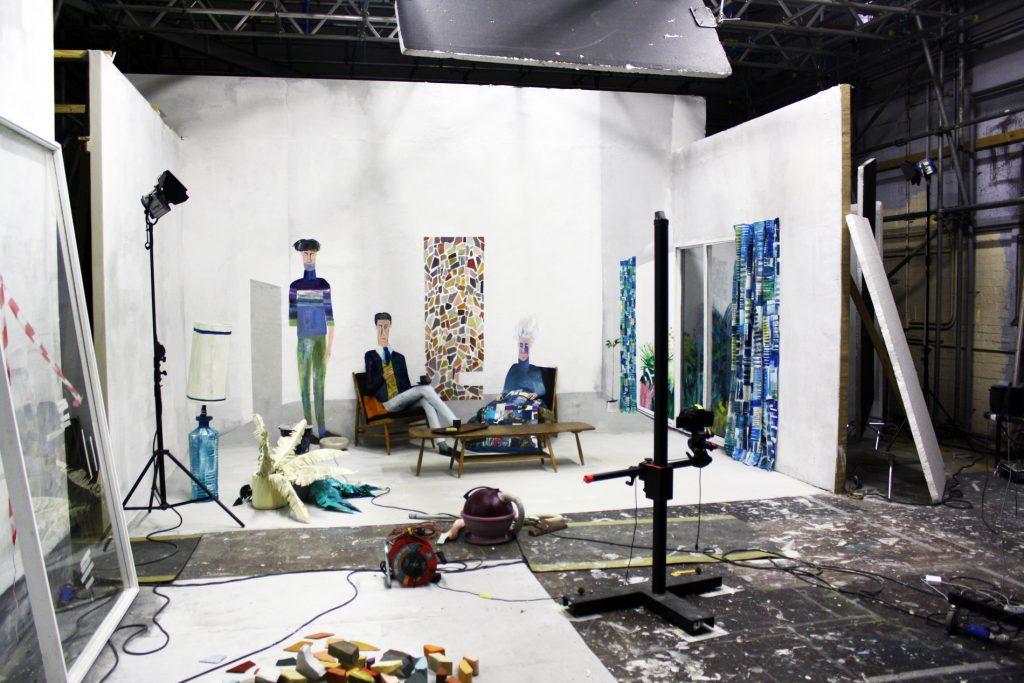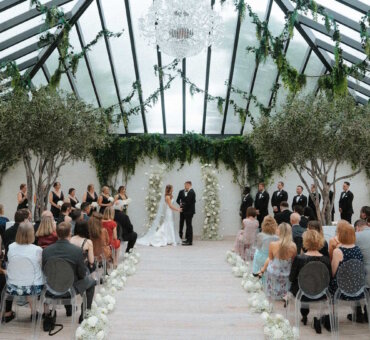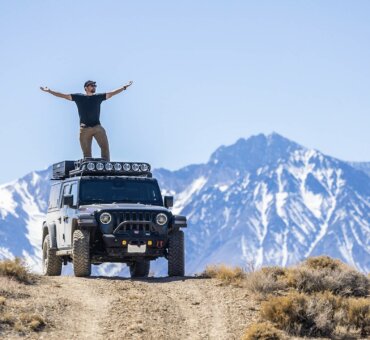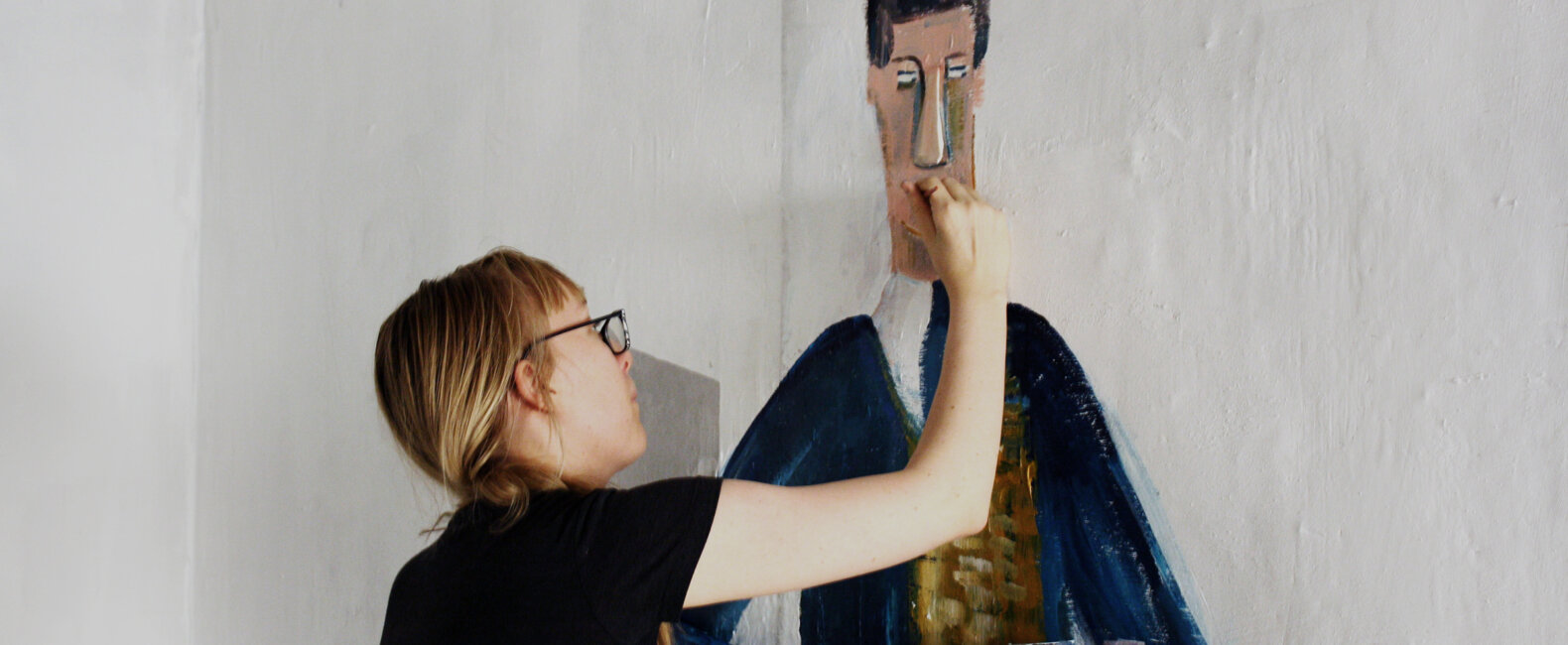At just 26 years old, Daisy Jacobs was nominated for an Academy Award for her animated short film, The Bigger Picture. Short in this context is a bit ironic. The project was physically massive: life-sized paintings painstakingly animated frame by frame over six months. The result is striking — unforgettable even. Ostensibly a simple story about a family, the film explores life-sized issues including death, loss, anger, and grief. In many ways, the scale of the art matches the scale of the themes. But that might be too tidy of an interpretation. Daisy’s reasons for working in the large scale are much more down to earth: “Personally, I can get more into the character,” she told us. “He is the same size as me; and what he does and physically touches, I’m animating at the same scale I encounter in the real world.”
We’re sure The Bigger Picture is unlike anything you’ve ever seen. Watch the film below and then read our conversation with Daisy to get a glimpse into its masterful, painstaking creation.
Musicbed: When did you first get the idea for The Bigger Picture? What was the initial spark?
The story was based on a personal experience with my gran dying. The life-sized technique was something I’d been developing with other smaller films during my first year at The National Film and Television school. I’d done lots of tests and gotten better at it with each one. But the whole process really came into its own while we shot The Bigger Picture, because we had the time and resources we needed to do it right.
In a behind-the-scenes video, you mentioned that you thought the process of making the film would be easy and you could knock out two of them. Things didn’t quite turn out that way, it seems?
I started off incredibly arrogantly. The more I make films and the more I deal with them, the more I realize how difficult it is. I’m still trying to push myself, but mentally I’ve become far less arrogant about the process.
Let’s talk about that process. How much of the story is planned out? How much is spontaneous?
It’s a mixture because you storyboard everything ahead of time, and you make an animatic, which is a kind of animated storyboard where everything is timed out. So you’ve more or less come up with everything beforehand. You’ve also recorded your voices beforehand. Still, I would say that within each bit that’s already planned, there’s room for ideas that can be added along the way. For example, we knew we were going to animate the water pool and it would come out of the teacup and overflow and so on. But we didn’t know the tray would sink or the exact movement of things, so those were the things we worked out on set. You’re reacting to what’s planned. But here’s the thing, the animation we do is created frame by frame as we go along. So not only do we have to adapt, but we can never go back.
On my latest film, we had a motion control move that went wrong halfway through the process. We had four characters acting on different stop-frame planes, and the camera didn’t end up in the right place. But because we’d spent so long on it, we had to animate blindly. It all worked out in the end, but that was very challenging. I think the lessons we learned on The Bigger Picture taught us how to better cope with problems as they come up.
It sounds kind of nerve-racking.
Oh yes, definitely. When I first learned animation in school, it was very difficult for me. I was definitely the worst student in class for a good six months. But you build up your skills and it eventually becomes instinctive; and as soon as that happens, you don’t really have to think anymore. You just find ways to add in more and more elements.

Is there a message within the large form itself?
I would say two things. One is that for me, personally, I can get more into the character. He is the same size as me; and what he does and physically touches, I’m animating at the same scale I encounter in the real world. I would also say that the life-sized elements make everything feel slightly off, slightly eerie, slightly unnerving. It’s the contrast between what’s real and what’s unreal — the mix of animated characters with altered real-life objects in painted settings — that feels different from traditional animation. The patina on the different types of surfaces, the ways the characters interact with their setting — these aren’t miniature versions of the world. I want the viewer to constantly wonder where they are. I think that effect is kind of magical.
How long did The Bigger Picture take to shoot?
It took six months to animate and probably about four months of post and editing. And before that, about two months of writing and developing. So all in, around a year. We’ve just finished a new film, which took two years to make and ten months to animate something that has the same running time.
Why did the new film take longer?
It’s more complicated. There were a lot bigger set transitions; and everything is patterned, so I had to paint everything. There are also more characters. It’s just more complex.
What goes on during a typical day of animating?
We typically start around 9 or 10 a.m. and finish around 9 or 10 p.m. We tend to animate the whole day long and have a sandwich on our lap whilst checking the footage. I would say the animation stage is extremely intense and very physical — especially with life-sized work. Post tends to be a bit more reflective.
How do you infuse spontaneity into a project that’s so meticulously planned? The film feels very natural, like a live-action film, but it’s put together so slowly.
Yes, absolutely. For example, when you’re acting the characters, we don’t know all the gestures or what’s going to happen. As you animate, you have to become the character. That helps to create spontaneity in the actions and reactions. We also tend to animate very quickly. My co-director Chris and I move extremely fast. I think that injects more life into the figures. Actually, we can get quite slapdash which, oddly, helps make things seem more natural.
Picasso said: “A great painting comes together, just barely.”
That’s really true. And I’m in intense terror throughout the entire process, especially on my latest film where we had to pay for everything. Absolute terror.
When does the terror end?
Never. It never ends. Because you still want people to like what you’ve done. And that’s terrifying.
There’s not a point where you say to yourself, “Okay, this is working, this feels right”?
I have absolutely no idea until I watch it about a year later and go, “How on earth did I make that?” But if you’re really pushing yourself — and constantly in a state of panic — the work will always be better than something you’re totally comfortable with. Always.


















































































